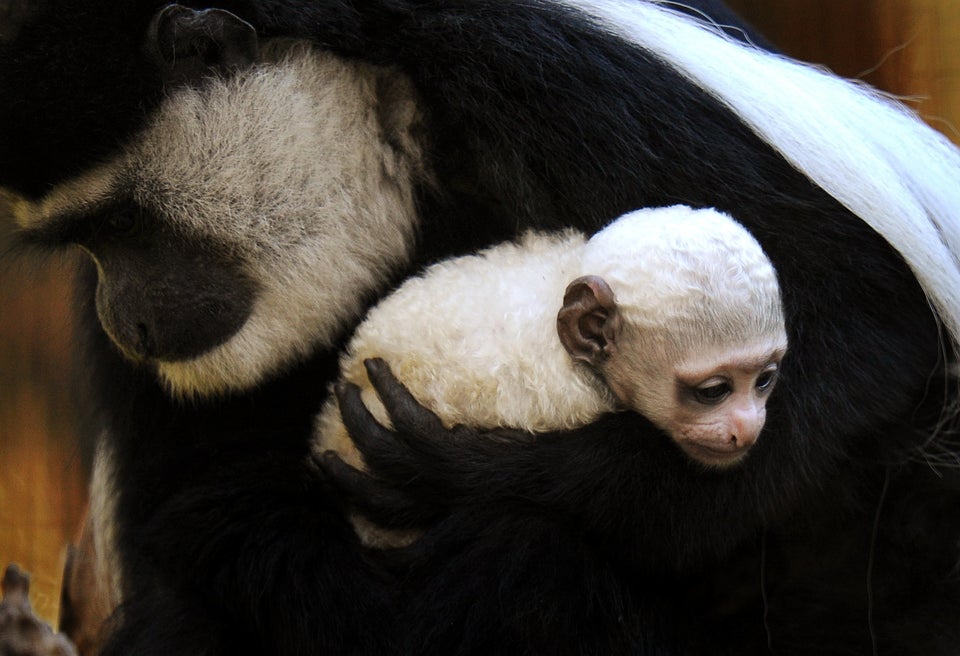A newborn horse in Virginia has scientists celebrating, and not just because she's cute. The still-unnamed filly isn't a regular domesticated horse — she's a Przewalski's horse, a formerly extinct species deemed the last true wild horse on Earth. She's also the first of her kind born via artificial insemination, a milestone seven years in the making.
Przewalski's horses (pronounced "sheh-val-skee") were declared extinct in the wild 44 years ago, wiped out from their native China and Mongolia by hunting, habitat loss and livestock encroachment. Fourteen survived in zoos, and thanks to conservationists, they had enough offspring to begin reintroduction in the 1990s. Those horses then reproduced in the wild, and in 2008 the species was upgraded from extinct to endangered.
There are now about 500 wild Przewalski's horses on Earth, all carrying the genes of those original 14 founders. Another 1,500 or so live at zoos and breeding centers, but boosting their numbers while maximizing genetic diversity can still be a challenge.
"It seems reasonable to assume that reproduction for the Przewalski's horse would be similar to domestic horses, but it simply isn't the case," says Budhan Pukazhenthi, a reproductive physiologist at the Smithsonian Conservation Biology Institute in Virginia, where the foal was born on July 27. "After all these years of persevering, I can honestly say I was elated to receive the call informing me that the foal had been born."
The value of artificial insemination is that it doesn't require both parents to be together for a successful mating, thus enabling better gene matches regardless of location. Moving the animals themselves can be expensive and dangerous, the SCBI explains in a press release, while the collection of semen is cheaper, safer and "significantly improves the efficiency of managing small populations of endangered species."
The foal's mother, Anne, was born at SCBI to a mare from Europe and a stateside stallion renowned for his genes. Her father also lives at SCBI, so the use of artificial insemination was more about demonstrating its viability than geographic necessity. It required specialized animal-handling facilities, hormonal treatments to induce ovulation, and conditioning of Anne to provide urine samples for hormone monitoring and other tests.
Anne's pregnancy was confirmed 35 days after insemination using ultrasound technology, and she was monitored closely by SCBI staff for more than 11 months.
"Anne is a young, first-time mother," says Dolores Reed, supervisory biologist at SCBI, in a statement. "She had a normal pregnancy that lasted 340 days, and the foaling lasted less than 10 minutes. I've raised a lot of foals and other hoofed stock over the years, but this filly feels like an extra-special triumph for us and her species."
Przewalski's horses have never been tamed for riding, leading some to consider them the "last truly wild horse in existence today." Scientists at SCBI — along with collaborators from Auburn University in Alabama, the Wilds in Ohio and Conservation Centers for Species Survival — say the unprecedented birth of a Przewalski's foal by artificial insemination bodes well not just for her species, but for rare horses everywhere.
"This is a major accomplishment," Pukazhenthi says, "and we hope our success will stimulate more interest in studying and conserving endangered equids around the world."
